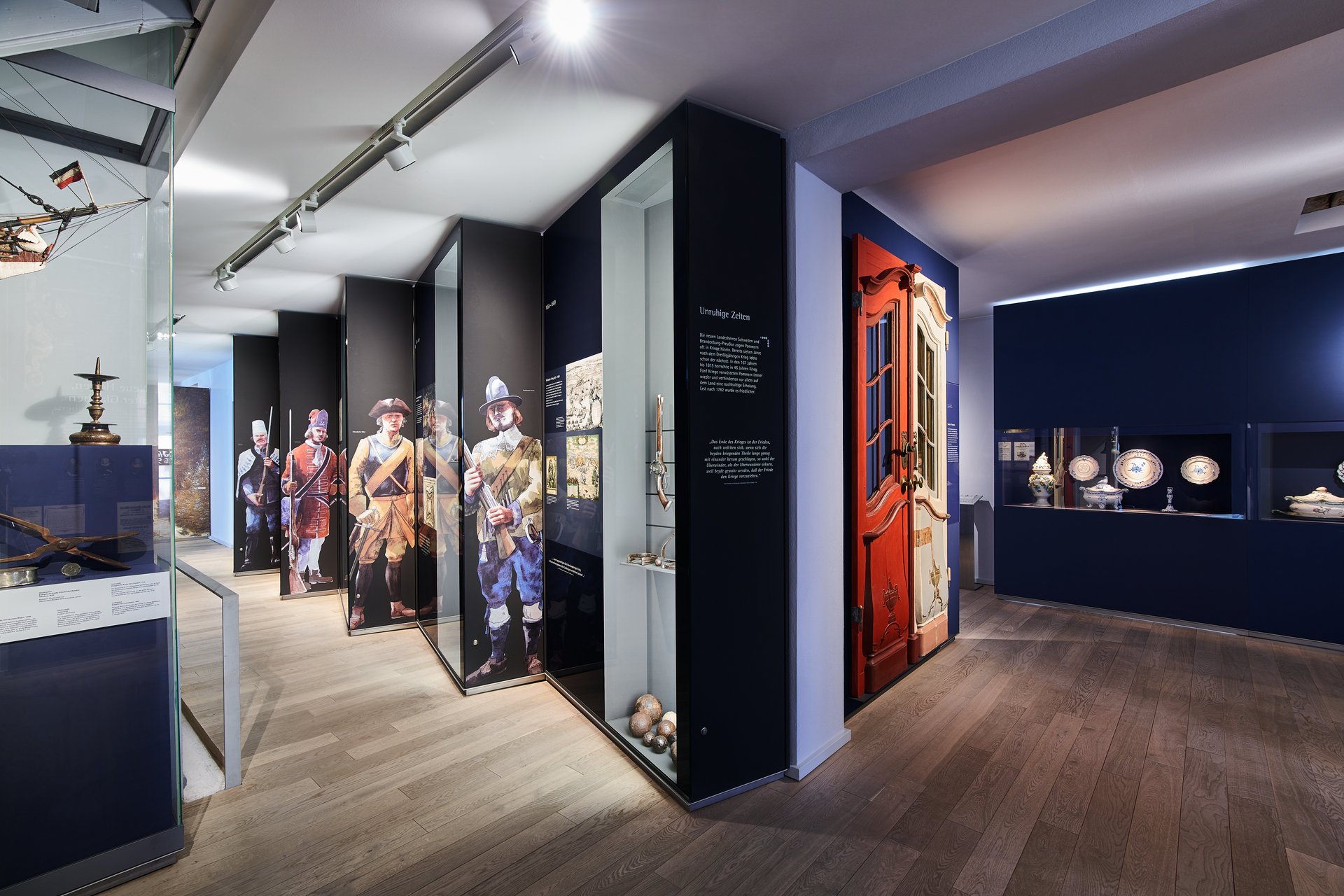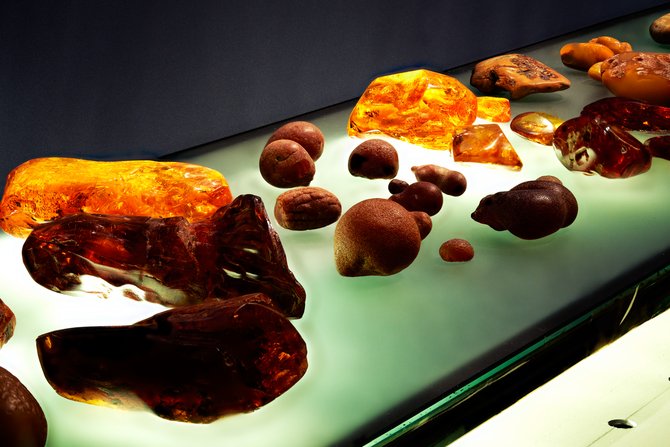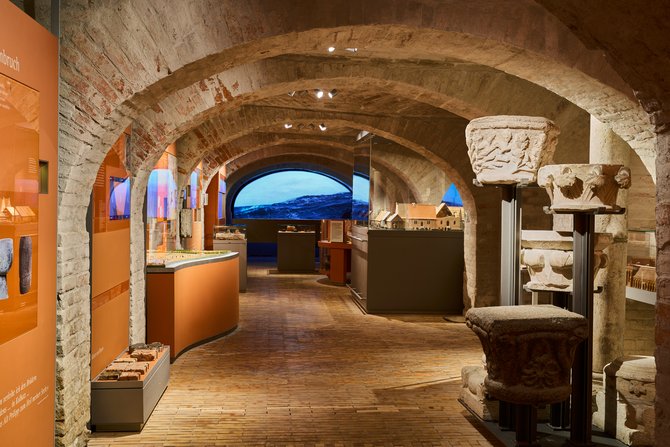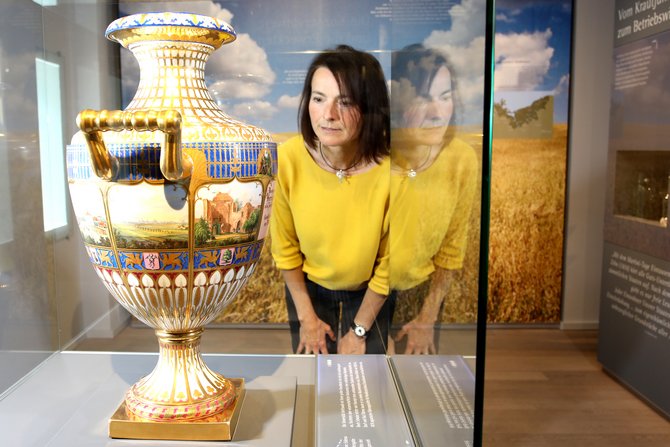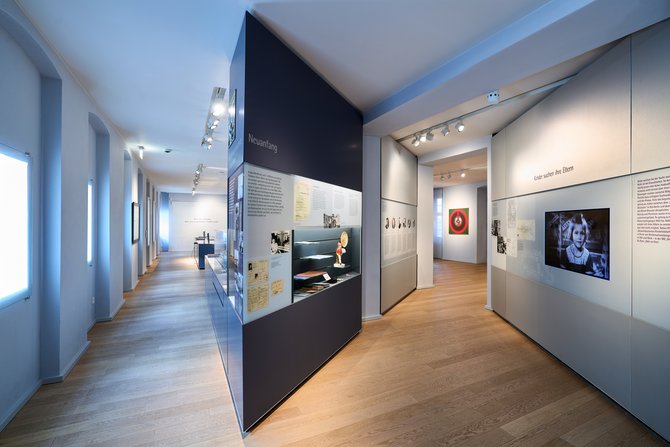Pomerania – The Land by the Sea
14,000 years of eventful history along the German-Polish Baltic coast on both sides of the river Oder are presented here at the site of the former Franciscan Grey Monastery.
The Geological History of Pomerania
Experience the development of the Pomeranian landscape from its earliest geological profile, with layers of rock that are millions of years old, to the formation of amber and the effects of the Ice Age on the landscape.
Pomerania from the Stone Age to the Reformation
Fascinating exhibits paint a multifaceted picture of Pomerania since the first hunters and gatherers roamed the land. The Peterfitz Ring, a 2 kg gold ring dating back to the turmoil of the Migration Period, is an exceptionally exciting find. Another impressive highlight is the unique 30-square-metre Croy Tapestry – a testimony to the high culture at the court of the Griffins, who were the ruling Pomeranian dynasty.
From the Swedish era to the Prussian province of Pomerania
“Pomerania burnt to the ground!” – The Thirty Years’ War was horrifically violent. After the war, Pomerania was divided for almost 200 years: One part was ruled by Sweden, another by Brandenburg. In 1815, Pomerania became a Prussian province. During this time, fishing villages became fashionable spas. The majestically decorated Vase of Eldena, which grateful students presented to the director of the State and Agricultural Academy in Eldena, will leave you with a profound impression.
Pomerania in the 20th Century – from the First World War to the Present
In view of the wars, the multiple collapses of state structures, and the huge population displacements and migration, the 20th century marked perhaps the greatest caesura in the history of the region. Ultimately, the name Pomerania almost completely disappeared in the era of the German Democratic Republic. It is only in the last 30 years that the structures that had arisen over centuries began to play a stronger role again. Since 2007, when the borders fell as Poland joined the Schengen area, Germans and Poles now meet as equals.
The exhibition shows the many facets of these ruptures and continuities. In addition to informative exhibits, media stations offer more in-depth information. Interviews with contemporary witnesses open up biographical approaches and narrate the history of the region from different perspectives.
